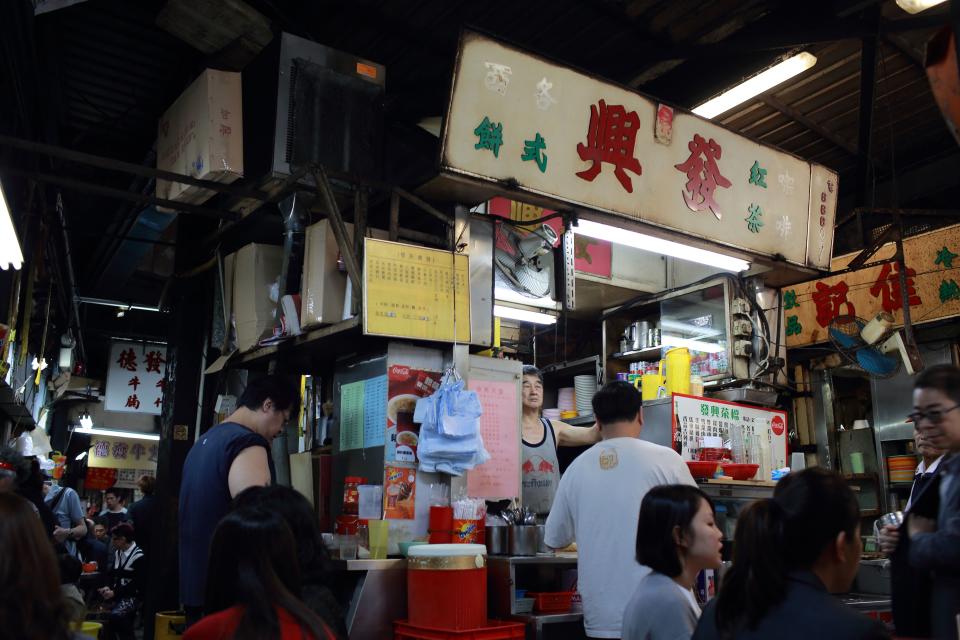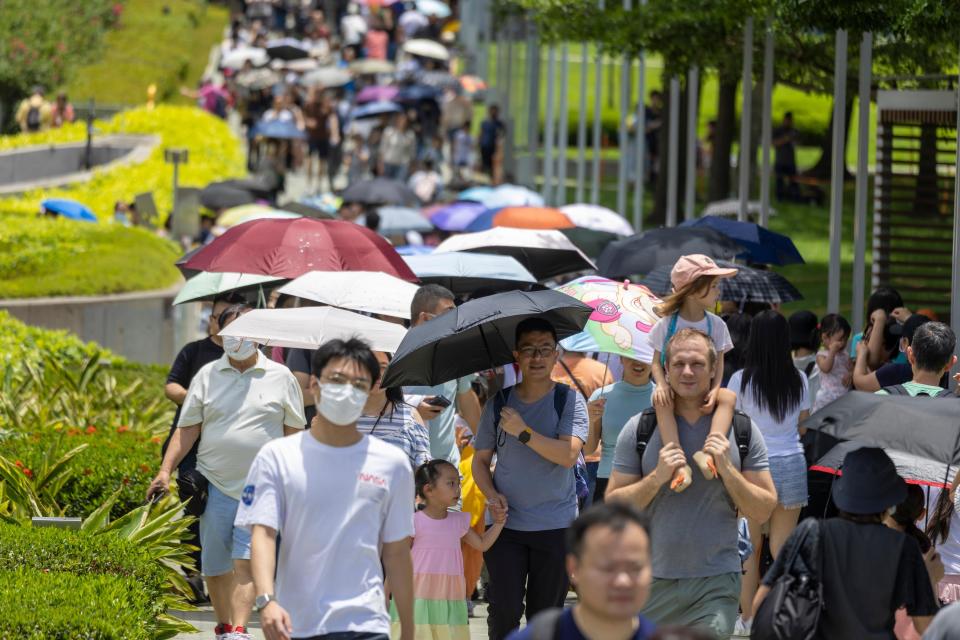7 things to know if you're visiting Hong Kong and want to experience the city like a local
I was born and raised in Hong Kong.
I've noticed things that only people who live here would do.
If tourists want to blend in, they should make noise at food stalls and whip out umbrellas when the sun shines bright.
Born and raised in Hong Kong, I've seen various quirks and unique behaviors that have become ingrained in the city's culture. Whether it's donning puffer jackets during mild winters or whipping out umbrellas when the sun is shining bright, there are certain things I only expect to see in Hong Kong.
Here are seven things you can do to blend in like the locals in Hong Kong.
1. Despite mild temperatures, pull out a puffer jacket during the winter months.
In Hong Kong, winters may not plummet to the bone-chilling levels experienced in parts of the US or Canada, yet locals often adopt an Antarctic-like attitude when the temperature begins to dip.
From December to February, when temperatures hover at just above 60 degrees, a distinctive shift in attire emerges. Locals don puffer coats, ear muffs, gloves, and furry boots — embracing a winter wardrobe that sets them apart from expats and tourists.
You can often spot the contrast between them as foreigners comfortably sport T-shirts and shorts, unfazed by the perceived "cold." Although some areas, such as the countryside and mountainous regions, experience slightly lower temperatures, the general weather remains sunny, making jeans and a hoodie sufficient for most occasions.
2. Make some noise when visiting food stalls.

Dai pai dongs, or open-air food stalls, are a distinct feature of Hong Kong's culinary landscape. They offer an array of local delights such as congee, noodles, clay pot rice, siu mei, seafood, and Chiuchow dishes. However, what truly distinguishes these dining establishments is their unpretentious service style.
Visitors should anticipate a vibrant atmosphere with plenty of energetic communication — expect to hear raised voices, dishes being promptly served in front of you, and the need to project your voice across the room to attract the servers' attention. Don't be shy or offended — it's all part of the experience.
3. Learn a few Cantonese phrases and sprinkle them into your sentences.
In Hong Kong, Chinese and English are the official languages. Cantonese, the local dialect, resonates as the predominant language, spoken by a significant 88.2% of the population, while English finds its place among 4.6% of speakers.
Despite Cantonese being the primary language, the educational system mandates English as a compulsory foreign language in primary and secondary schools, nurturing a substantial bilingual population among the youth. This bilingual proficiency leads to a seamless fusion of both languages within a sentence, a common practice among those fluent in both.
Those who can switch between both languages often mix them up in one sentence, like saying "Wai, oh yeew that one," or "Oi, I like that one." It's like a cool blend showing how Chinese and English flow together naturally in everyday chats. And when someone forgets a word in one language, they smoothly throw in a phrase from the other — a handy trick for many of us.
4. Use an Octopus card for absolutely everything.

In Hong Kong, possessing an Octopus card is a lifesaver for locals, especially when they accidentally leave behind their wallet or phone. This smart card acts as the city's primary cashless payment method, seamlessly facilitating transactions across various services and amenities — and it's widely accepted in convenience stores, restaurants, vending machines, and even for accessing movie theaters and gyms.
Although it was first launched in 1997 as a way to pay for public transport, it has grown into something used for practically anything and everything — few people leave the house without it.
5. Don't tip
In contrast to the US where tipping is customary, Hong Kongers consider it impolite in their culture. Service charges are typically included in the bill. The main downside from the customers' perspective is that exceptional service quality is not guaranteed.
6. Whip out your umbrella on a sunny day.

Despite Hong Kong receiving around 1,843 hours of sunshine yearly, locals generally shy away from tanning. It's a common sight to witness numerous individuals carrying umbrellas outdoors, not necessarily because of rain, but to shield themselves from the blazing sun.
Their caution might be justified, considering that UV rays frequently surpass a level of 10 on sunny summer days. This underscores the importance of wearing sunscreen almost daily or finding ways to protect yourself from the intense heat.
7. Don't wince at street food ingredients
Hong Kong is one of the best places in Asia to get street food. Certain dishes are unique to the city, and unfamiliar ingredients come across as unappetizing to some tourists. While traveler favorites include dishes like egg waffles and fish balls, opt for foods like cheung fun, a rice noodle sheet wrapped in bundles and served with sweet and peanut sauces, the soy-braised cuttlefish or octopus and a perennial local staple, the "stinky" tofu.
Neighborhoods like Mong Kok and Sham Shui Po are the best places to start.
Read the original article on Business Insider
